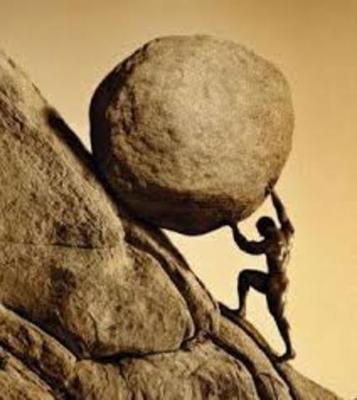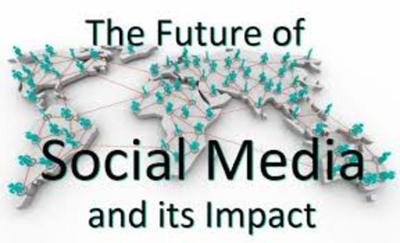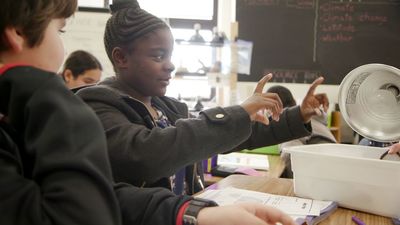Browse
Assessing Learning
Posted on: #iteachmsu

ASSESSING LEARNING
Article with Image
WHAT IS COMPUTER SCIENCE ENGINEERING ?
Computer science engineering (CSE) is one of the popular courses among engineering aspirants which focuses on the basic elements of computer programming and networking. Students pursuing computer science courses will gain knowledge of design, implementation and management of information system of both hardware and software. Going by the name, CSE course deals primarily with the theory of computation and design of computational systems. The course is offered across the globe in technical institutions at undergraduate as well as postgraduate levels awarding B.Tech and M.tech degrees, respectively.
Computer science engineering (CSE) is one of the popular courses among engineering aspirants which focuses on the basic elements of computer programming and networking. Students pursuing computer science courses will gain knowledge of design, implementation and management of information system of both hardware and software. Going by the name, CSE course deals primarily with the theory of computation and design of computational systems. The course is offered across the globe in technical institutions at undergraduate as well as postgraduate levels awarding B.Tech and M.tech degrees, respectively.
Posted by:
Scarlet Ethan Edien
Posted on: #iteachmsu

Article with Image
WHAT IS COMPUTER SCIENCE ENGINEERING ?
Computer science engineering...
Computer science engineering...
Posted by:
ASSESSING LEARNING
Monday, Oct 15, 2018
Posted on: #iteachmsu

ASSESSING LEARNING
struggle
Posted by:
Scarlet Ethan Edien

Posted on: #iteachmsu


Posted by
about 7 years ago
Learn English with Malala in her speech at Nobel Peace Prize in Oslo 2014. Malala Yousafzai, 17, is the first Pakistani, and youngest ever recipient of the N...
Assessing Learning
Posted on: #iteachmsu

ASSESSING LEARNING
What Is the Real Impact of Social Media?
Posted by:
Scarlet Ethan Edien

Posted on: #iteachmsu

ASSESSING LEARNING
e learning
Posted by:
Scarlet Ethan Edien

Posted on: #iteachmsu

ASSESSING LEARNING
Education
Posted by:
Scarlet Ethan Edien

Posted on: #iteachmsu

ASSESSING LEARNING
How Can We Successfully Land a Rover on Mars?
The classic egg drop experiment gets reinvented as a driving question for physics students to explore a real-world problem.
By Suzie Boss
July 26, 2018
When a teenager climbs atop his desk and drops an object to the floor, teacher Johnny Devine doesn’t object. Far from it—he’s as eager as the rest of the class to see what happens next.
In a split second, the student and his teammates get positive feedback for the object they have cobbled together by hand. A small parachute made of plastic and held in place with duct tape opens as planned, slowing the descent and easing the cargo to a safe landing. Students exchange quick smiles of satisfaction as they record data. Their mission isn’t accomplished yet, but today’s test run brings them one step closer to success as aspiring aerospace engineers.
To boost engagement in challenging science content, Devine has his students tackle the same problems that professional scientists and engineers wrestle with. “Right away, they know that what they are learning can be applied to an actual career,” Devine says. “Students are motivated because it’s a real task.”
From the start of Mission to Mars, students know that expert engineers from local aerospace companies will evaluate their final working models of Mars landing devices. Their models will have to reflect the students’ best thinking about how to get a payload from orbit onto the surface of the Red Planet without damaging the goods inside. While real Mars landings involve multimillion-dollar equipment, students’ launchers will carry four fragile eggs.
THE ROAD MAP
Although the project gives students considerable freedom, it unfolds through a series of carefully designed stages, each focused on specific learning goals. Having a detailed project plan “creates a roadmap,” Devine explains, “for the students to really track their progress and see how what they’re learning connects back to the guiding question: How can we successfully land a rover on Mars?”
©George Lucas Educational Foundation
Before introducing technical content, Devine wants students to visualize what space scientists actually do. By watching videos of engineers who design entry, descent, and landing systems for spacecraft, students start getting into character for the work ahead.
Devine introduces a series of hands-on activities as the project unfolds to help students put physics concepts into action. They learn about air resistance, for instance, by experimenting with parachute designs and wrestling with a real challenge: How will they slow their landers to a reasonable speed for entry into the thin Martian atmosphere?
To apply the concept of change in momentum, students design airbag systems to go on the bottom of their landers—a location aptly called the crumple zone. They experiment with bubble wrap and other materials as potential cushioners for their cargo.
As the grand finale approaches, students keep using what they learn to test, analyze, and modify their designs. “You have to repeat the equations with different trials,” one student explains. “Being able to use that math over and over again helps it stick.”
Much of the hands-on learning in this PBL classroom “might look like a traditional physics lab,” Devine acknowledges, with students learning concepts through inquiry investigations. What’s different is the teacher’s ongoing reminder “to make sure students stay in character” as systems engineers. Each lab investigation relates back to their driving question and creates more opportunities for Devine to ask probing questions and formatively assess his students’ understanding. “We do a lot of framing in and framing out after each of those lessons so students have the chance to reflect and connect it back,” the teacher explains.
EXPERT CONVERSATIONS
When it is finally time for students to launch their precious cargo off a second-story landing, engineers from local aerospace companies are standing by to assess results. How many eggs in each lander will survive the fall?
Even more important than the test data are the discussions between experts and students. One engineer, for instance, asks to see earlier versions of a team’s design and hear about the tests that led to modifications. A student named Elizabeth perks up when she hears engineers using the same technical vocabulary that she and her classmates have learned. “It was kind of a connection—this is actually a thing that goes on,” she says.
“They had really deep, meaningful conversations so that students could practice communicating their justification for their designs,” Devine says. Hearing them use academic language and apply physics concepts tells the teacher that students deeply understand the science behind their designs. “At the end of the day, that’s what I’m most concerned about,” he says.
https://youtu.be/bKc2shFqLao
By Suzie Boss
July 26, 2018
When a teenager climbs atop his desk and drops an object to the floor, teacher Johnny Devine doesn’t object. Far from it—he’s as eager as the rest of the class to see what happens next.
In a split second, the student and his teammates get positive feedback for the object they have cobbled together by hand. A small parachute made of plastic and held in place with duct tape opens as planned, slowing the descent and easing the cargo to a safe landing. Students exchange quick smiles of satisfaction as they record data. Their mission isn’t accomplished yet, but today’s test run brings them one step closer to success as aspiring aerospace engineers.
To boost engagement in challenging science content, Devine has his students tackle the same problems that professional scientists and engineers wrestle with. “Right away, they know that what they are learning can be applied to an actual career,” Devine says. “Students are motivated because it’s a real task.”
From the start of Mission to Mars, students know that expert engineers from local aerospace companies will evaluate their final working models of Mars landing devices. Their models will have to reflect the students’ best thinking about how to get a payload from orbit onto the surface of the Red Planet without damaging the goods inside. While real Mars landings involve multimillion-dollar equipment, students’ launchers will carry four fragile eggs.
THE ROAD MAP
Although the project gives students considerable freedom, it unfolds through a series of carefully designed stages, each focused on specific learning goals. Having a detailed project plan “creates a roadmap,” Devine explains, “for the students to really track their progress and see how what they’re learning connects back to the guiding question: How can we successfully land a rover on Mars?”
©George Lucas Educational Foundation
Before introducing technical content, Devine wants students to visualize what space scientists actually do. By watching videos of engineers who design entry, descent, and landing systems for spacecraft, students start getting into character for the work ahead.
Devine introduces a series of hands-on activities as the project unfolds to help students put physics concepts into action. They learn about air resistance, for instance, by experimenting with parachute designs and wrestling with a real challenge: How will they slow their landers to a reasonable speed for entry into the thin Martian atmosphere?
To apply the concept of change in momentum, students design airbag systems to go on the bottom of their landers—a location aptly called the crumple zone. They experiment with bubble wrap and other materials as potential cushioners for their cargo.
As the grand finale approaches, students keep using what they learn to test, analyze, and modify their designs. “You have to repeat the equations with different trials,” one student explains. “Being able to use that math over and over again helps it stick.”
Much of the hands-on learning in this PBL classroom “might look like a traditional physics lab,” Devine acknowledges, with students learning concepts through inquiry investigations. What’s different is the teacher’s ongoing reminder “to make sure students stay in character” as systems engineers. Each lab investigation relates back to their driving question and creates more opportunities for Devine to ask probing questions and formatively assess his students’ understanding. “We do a lot of framing in and framing out after each of those lessons so students have the chance to reflect and connect it back,” the teacher explains.
EXPERT CONVERSATIONS
When it is finally time for students to launch their precious cargo off a second-story landing, engineers from local aerospace companies are standing by to assess results. How many eggs in each lander will survive the fall?
Even more important than the test data are the discussions between experts and students. One engineer, for instance, asks to see earlier versions of a team’s design and hear about the tests that led to modifications. A student named Elizabeth perks up when she hears engineers using the same technical vocabulary that she and her classmates have learned. “It was kind of a connection—this is actually a thing that goes on,” she says.
“They had really deep, meaningful conversations so that students could practice communicating their justification for their designs,” Devine says. Hearing them use academic language and apply physics concepts tells the teacher that students deeply understand the science behind their designs. “At the end of the day, that’s what I’m most concerned about,” he says.
https://youtu.be/bKc2shFqLao
Posted by:
Scarlet Ethan Edien
Posted on: #iteachmsu

How Can We Successfully Land a Rover on Mars?
The classic egg drop experiment gets reinvented as a driving questi...
Posted by:
ASSESSING LEARNING
Tuesday, Aug 14, 2018
Posted on: #iteachmsu


Posted by
about 7 years ago
What if students controlled their own learning? | Peter Hutton | TEDxMelbourne
This talk was given at a local TEDx event, produced independently of the TED Conferences. Peter is a school principal with a radical solution, no school bell, no school levels, staff selection and curriculum is even decided by students. Result? No bullying, collaboration, innovation in school dynamics.
Peter Hutton hated his own school experience, where he felt that education was being done “to him”. As Principal of Templestowe College he developed an educational model that allows students to individualize their education and share control in the running of the school.
About TEDx, x = independently organized event In the spirit of ideas worth spreading, TEDx is a program of local, self-organized events that bring people together to share a TED-like experience. At a TEDx event, TEDTalks video and live speakers combine to spark deep discussion and connection in a small group. These local, self-organized events are branded TEDx, where x = independently organized TED event. The TED Conference provides general guidance for the TEDx program, but individual TEDx events are self-organized.* (*Subject to certain rules and regulations)
This talk was given at a local TEDx event, produced independently of the TED Conferences. Peter is a school principal with a radical solution, no school bell, no school levels, staff selection and curriculum is even decided by students. Result? No bullying, collaboration, innovation in school dynamics.
Peter Hutton hated his own school experience, where he felt that education was being done “to him”. As Principal of Templestowe College he developed an educational model that allows students to individualize their education and share control in the running of the school.
About TEDx, x = independently organized event In the spirit of ideas worth spreading, TEDx is a program of local, self-organized events that bring people together to share a TED-like experience. At a TEDx event, TEDTalks video and live speakers combine to spark deep discussion and connection in a small group. These local, self-organized events are branded TEDx, where x = independently organized TED event. The TED Conference provides general guidance for the TEDx program, but individual TEDx events are self-organized.* (*Subject to certain rules and regulations)
Assessing Learning
